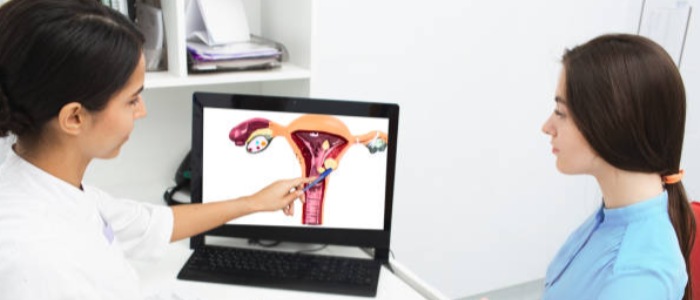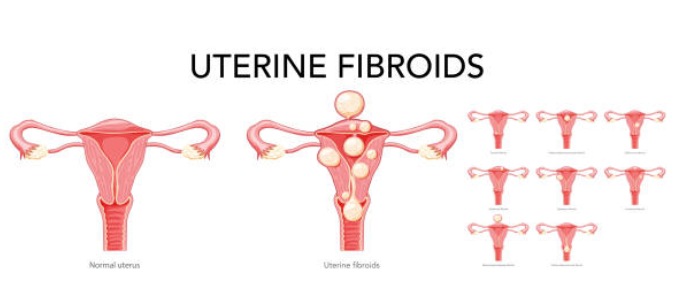What Are Different Types of Fibroids? Causes, Symptoms, & Treatment
Fibroids, medically known as uterine leiomyomas, are noncancerous growths of the uterus that often appear during childbearing years. These benign tumors can vary in size, number, and location within the uterus. Understanding the different types of fibroids, their causes, symptoms, and available treatments is essential for women's reproductive health. In this article, we'll explore the various types of fibroids and discuss the causes, symptoms, and treatment options, with a special emphasis on the care provided at AMVI Hospital in Hyderabad.

What are the Types of Fibroids?
- Subserosal Fibroids: These fibroids develop on the outer surface of the uterus and may grow to be quite large. They can put pressure on nearby organs, causing discomfort or pain.
- Intramural Fibroids: Intramural fibroids are the most common type. They grow within the muscular uterine wall and can result in the uterus appearing larger than normal. These fibroids can cause heavy menstrual bleeding and pain.
- Submucosal Fibroids: Submucosal fibroids develop just under the lining of the uterine cavity. They can lead to heavy menstrual bleeding, as well as fertility issues and recurrent miscarriages.
- Pedunculated Fibroids: These fibroids are attached to the uterine wall by a stalk, resembling a mushroom. They can be either subserosal or submucosal and may twist, causing severe pain.

Causes of Fibroids
The exact cause of fibroids is not completely understood, but several factors can contribute to their development:
- Hormones: The hormone estrogen appears to play a crucial role in fibroid growth. These tumors often increase in size during pregnancy when estrogen levels are high and tend to shrink after menopause when estrogen levels drop.
- Genetics: If your mother or sister had fibroids, you may be at a higher risk of developing them.
- Ethnicity: Studies have shown that African-American women are more likely to develop fibroids than women of other racial groups.
- Other factors: Obesity, a diet high in red meat and low in green vegetables, alcohol consumption, and a lack of physical activity have also been associated with an increased risk of fibroids.
What are the Symptoms of Fibroids?
The presence and severity of fibroid symptoms can vary from person to person, and some women may not experience any symptoms at all. Common symptoms of fibroids include:
- Heavy Menstrual Bleeding: Fibroids can cause prolonged, heavy menstrual periods, often accompanied by clots. This can lead to anemia and fatigue.
- Pelvic Pain and Pressure: Large fibroids can cause a feeling of fullness or pressure in the lower abdomen. In some cases, this pressure may lead to constipation or difficulty with urination.
- Painful Periods: Some women experience more intense menstrual cramps due to the presence of fibroids.
- Painful Intercourse: Fibroids can make sexual intercourse painful or uncomfortable.
- Backache or Leg Pains: Large fibroids may press on nerves and cause back or leg pain.
- Difficulty Getting Pregnant: Depending on their location, fibroids may block or disrupt the fallopian tubes, making it difficult for the egg and sperm to meet. This can lead to fertility issues.

Treatment Options for Fibroids
The choice of treatment for fibroids depends on the severity of symptoms, a woman's age, and her desire to have children. Several treatment options are available:
- Myomectomy: Laparoscopic Myomectomy is a surgical procedure that removes individual fibroids while leaving the uterus intact, making it an option for women who wish to preserve their fertility.
- Hysterectomy: In severe cases, a Laparoscopic hysterectomy may be recommended. This surgery removes the entire uterus and is a definitive treatment for fibroids.
Other Treatment Choices Beside Surgery are as follows:
- Watchful Waiting: If fibroids are small and not causing significant symptoms, your doctor may recommend monitoring them rather than immediate treatment.
- Medications: Hormonal medications, such as birth control pills or IUDs, can help regulate heavy menstrual bleeding and relieve pain.
- Uterine Artery Embolization: This minimally invasive procedure cuts off the blood supply to the fibroids, causing them to shrink.
- Hysteroscopy:- This is the minimally invasive procedure that uses a thin, lighted tube with a camera to view the inside of the uterus. During a hysteroscopy, the doctor can remove small fibroids or destroy them with heat or electricity.
- Magnetic resonance imaging-guided ultrasound surgery (MRgFUS):- This is a non-invasive procedure that uses focused ultrasound energy to destroy fibroids. MRgFUS is performed under magnetic resonance imaging (MRI) guidance to ensure that the ultrasound energy is directed precisely at the fibroids.
When it comes to the diagnosis, treatment, and care of fibroids, AMVI Hospital in Hyderabad is dedicated to providing top-notch healthcare services. Our team of experienced gynecologists and surgeons offers a wide range of treatment options, from minimally invasive procedures to surgical interventions, tailored to each patient's unique needs.
Conclusion
Fibroids are a common issue among women of childbearing age, and understanding the different types, causes, symptoms, and treatment options is crucial for managing this condition. If you suspect you have fibroids or are experiencing related symptoms, consult with a healthcare professional, and consider the comprehensive care provided by AMVI Hospital to ensure you receive the best treatment for your specific situation. Remember that early intervention and a personalized treatment plan can greatly improve your quality of life and overall well-being.
Leave a Reply
Your email address will not be published. Required fields are marked *








